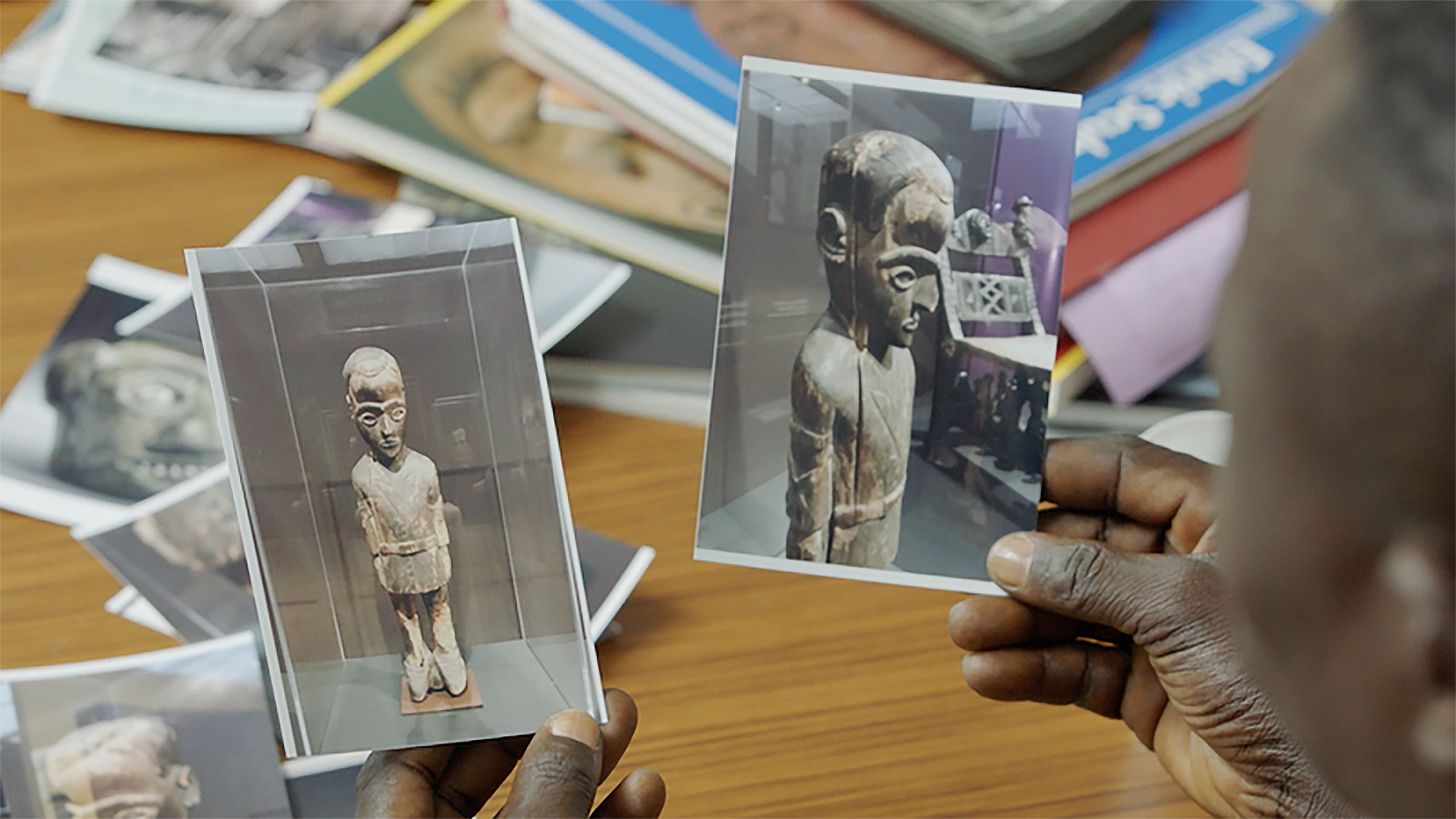
The NFT Project That’s (Re)Claiming A Museum Object
In the collection of the Virginia Museum of Fine Arts (VMFA) sits a 25 inches-tall wooden statue labeled a Diviner’s Figure, originating from the Democratic Republic of the Congo. Since February, that same sculpture also has a home on the blockchain, having been tokenized by the Congolese Plantation Workers Art League (CATPC), a collective of artists and plantation workers based in Lusanga, Congo. Done without the institution’s imprimatur, the mint represents a radical instance of digital decolonization that, with the medium of NFTs on its side, has no time for yesterday’s notions of ownership and authority.

Diviner’s Figure representing Belgian Colonial Officer, Maximilien Balot, 1931. Image: Travis Fullerton © Virginia Museum of Fine Arts
Also dubbed Balot, the statue at the heart of this project was carved in the wake of a 1931 Pende uprising, sparked by the severe depredations visited on Unilever plantation workers by the Belgian colonial administration. Officer Maximilien Balot was slain in the rebellion, and a sculpture was made in his image to capture and control his spirit. Under cloudy circumstances, the Pende community was dispossessed of the sacred object, which, over the decades, has changed hands in various transactions before being acquired by the VMFA. In 2021, CATPC sought to loan the statue, specifically for exhibition in the White Cube, a museum the group constructed with arts organization Human Activities in Lusanga, but to no avail.
For the Pende people, the return of the sculpture, whether through repatriation or a loan, holds significance — politically, spiritually, and culturally. “For over a hundred years, there has been a gap between the knowledge that is captured by these objects and the people to whom this culture belongs,” said CATPC member Cedart Tamasala in the video series Plantations and Museums. His colleague, Matthieu Kasiama, added, “They have the knowledge, but we, the creators of this art, don’t have access to this knowledge. How can we then become experts on African art?”
Thus: the mint, not only to stake digital ownership of the statue, but with the sale of Balot NFTs, to empower the local community by buying back land, providing food security for plantation workers, and reforesting the area to offset carbon emissions. “It’s a layer of thoughts and ideas, but it’s also a layer of property,” Renzo Martens, Founder of Human Activities, says of the blockchain. “It is used to render something communal again that was privatized — not just the sculpture, but the land.”

CATPC has minted and fractionalized Balot into 300 NFTs, opening to a public sale at the end of May. Image: Balot NFT / Human Activities
In June, at Art Basel, CATPC will release for sale 300 fractionalized NFTs of the Balot sculpture, in a model that further enables greater inclusion and participation, while challenging the VMFA’s hold on the statue.
In this, the initiative carries echoes of Crypto Connections, the 2020 platform spearheaded by Dr. Frances Liddell in collaboration with the National Museums of Liverpool, which invited participants to lay claim to NFTs minted from objects in the institution’s collection by simply describing their personal connection to the item. With that emerges a form of “shared guardianship,” per the researcher, since the museum may house the artifact, but it’s the individual that owns it on the blockchain.
And what might that ownership mean? “I think there is an interesting case to use NFTs to encourage exchange between owners, prompting thought and challenging us to question the information we are given,” Liddell recently told Jing Culture & Commerce. Of the Balot NFT project, she says, “It speaks to how the digital can symbolize the ‘power’ of objects, an idea which is discussed a lot in museum theory. By focusing on the agency of objects, we destabilize the power of the physical and NFTs could add a new layer to this idea with the addition of ‘digital ownership.’”

Richard Woodward (left), former curator of VMFA, with CATPC members Cedart Tamasala (center) and Matthieu Kasiama (right), in Plantations and Museums. Image: Courtesy the artists and KOW Berlin
The VMFA, on the other hand, has deemed the project “unacceptable and unprofessional,” saying it infringes on the copyright of the image of sculpture. Tamasala has countered, via the Richmond Times-Dispatch, that CATPC’s adoption falls under fair use, adding, “This image is the only way to get access to a sculpture that intellectually and artistically belongs to our community.”
What’s soured amid this quibble is the opportunity for the museum to establish a relationship with a source community in a restorative act of digital restitution. As Martens emphasizes of the Balot NFT project, “It could potentially be a way for digital assets and physical assets to work once again for the community. That’s what should be the main criteria: whether it is real and meaningful.”
Get original coverage of the cultural space directly in your inbox
It remains to be seen how NFTs will reshape discussions surrounding cultural repatriation, even as the medium brims with potential. Pitfalls — such as the ethics of financializing the digital sale of a power object, as Liddell points out — lie ahead, though the biggest obstacle might just be institutional resistance. Which is bound to be since such moves, even as they meaningfully address restitution, loosen the museological grip and authority. But if museums aren’t doing this crucial work, someone else will. “You cannot reverse history,” as Simon Gikandi, Chair of English at Princeton University, reflected in Plantations and Museums, “but you can reverse the way history is told.”
The post The NFT Project That’s (Re)Claiming A Museum Object appeared first on Jing Culture and Commerce.
This content was originally published here.


